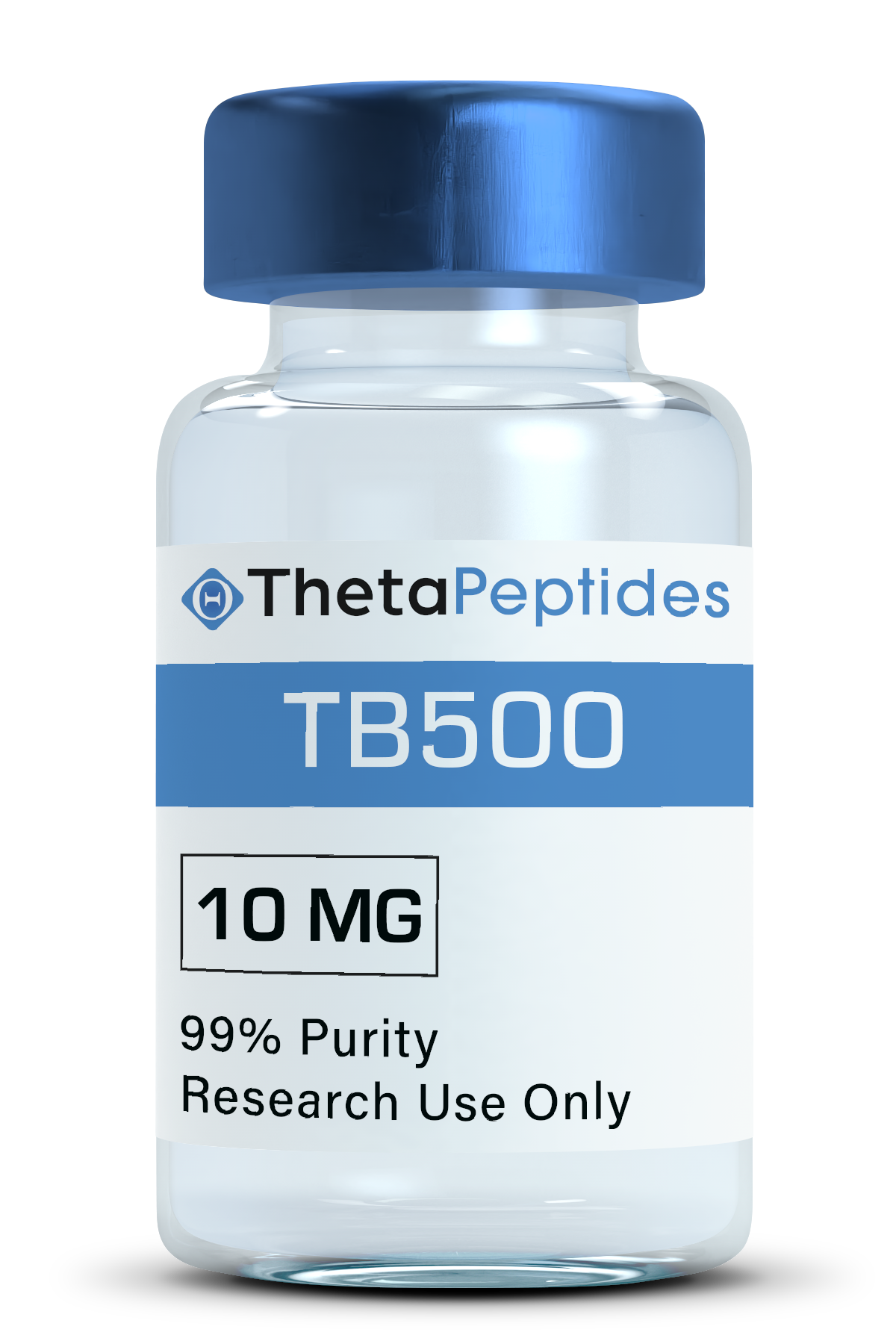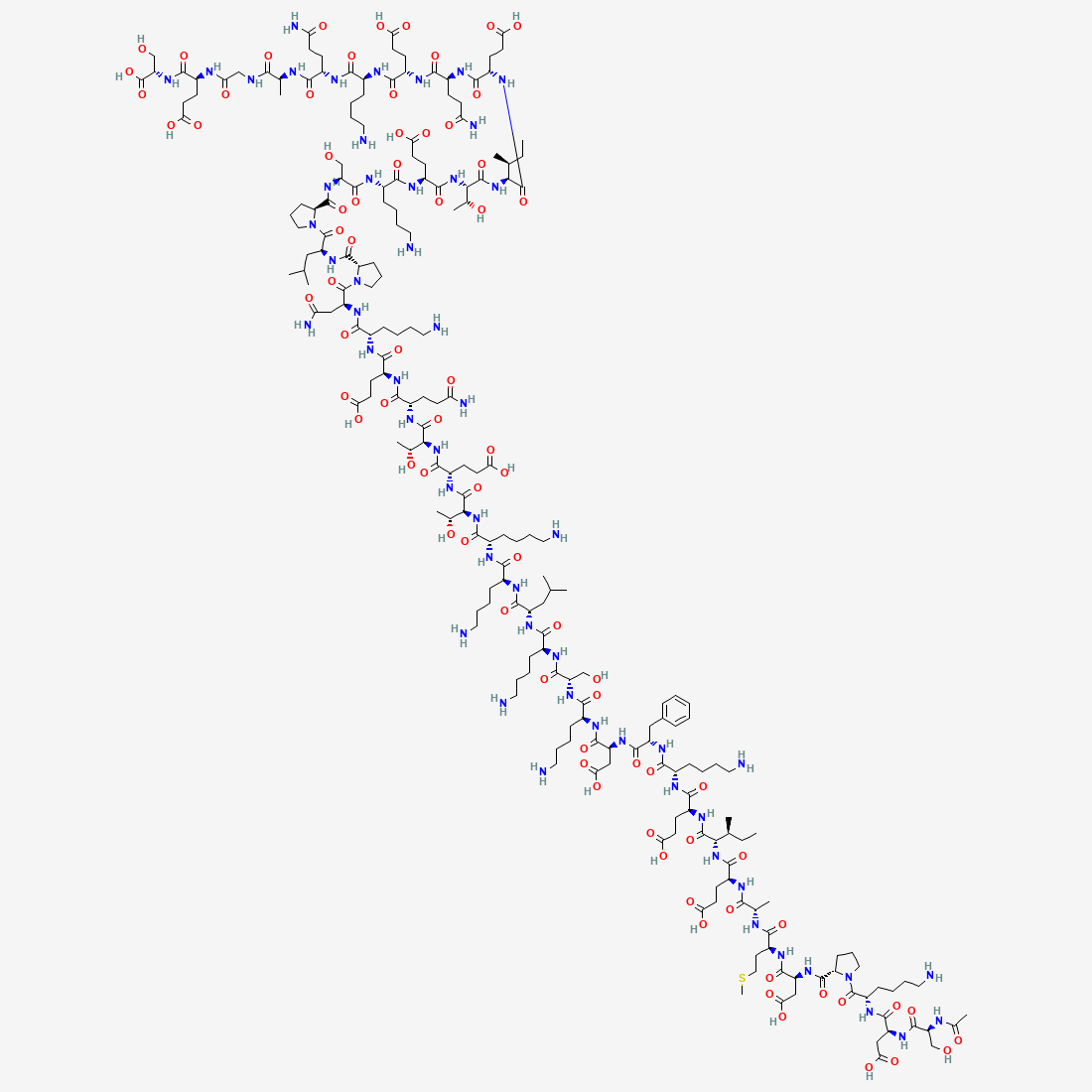 Image 1 of
Image 1 of


TB-500 (Thymosin Beta-4) 10mg
TB-500, a synthetic version of the naturally occurring peptide Thymosin Beta-4, consists of 43 amino acids. In animal models, Thymosin Beta-4 has demonstrated the ability to enhance blood vessel growth, regulate wound healing, decrease inflammation, and reduce oxidative damage in the heart and central nervous system. This peptide plays a significant role in tissue protection, repair, regeneration, and remodeling, and is also a focus of anti-aging research.
TB-500, a synthetic version of the naturally occurring peptide Thymosin Beta-4, consists of 43 amino acids. In animal models, Thymosin Beta-4 has demonstrated the ability to enhance blood vessel growth, regulate wound healing, decrease inflammation, and reduce oxidative damage in the heart and central nervous system. This peptide plays a significant role in tissue protection, repair, regeneration, and remodeling, and is also a focus of anti-aging research.
TB-500, a synthetic version of the naturally occurring peptide Thymosin Beta-4, consists of 43 amino acids. In animal models, Thymosin Beta-4 has demonstrated the ability to enhance blood vessel growth, regulate wound healing, decrease inflammation, and reduce oxidative damage in the heart and central nervous system. This peptide plays a significant role in tissue protection, repair, regeneration, and remodeling, and is also a focus of anti-aging research.
Product Usage: This PRODUCT IS INTENDED AS A RESEARCH CHEMICAL ONLY. This designation allows the use of research chemicals strictly for in vitro testing and laboratory experimentation only. All product information available on this website is for educational purposes only. Bodily introduction of any kind into humans or animals is strictly forbidden by law. This product should only be handled by licensed, qualified professionals. This product is not a drug, food, or cosmetic and may not be misbranded, misused or mislabled as a drug, food or cosmetic.
What is TB-500?
TB-500 is a synthetic analogue of Thymosin Beta-4, a peptide found in virtually all human and animal cells. Thymosin Beta-4 is part of a family of 16 related molecules with high sequence conservation and widespread presence in tissues and circulating cells. TB-500 binds to actin, blocks actin polymerization, and serves as the actin-sequestering molecule in eukaryotic cells.
Key Functions and Benefits
TB-500 has been identified as a gene up-regulated four to sixfold during early blood vessel formation, promoting the growth of new blood cells from existing vessels. This peptide is present in wound fluid and, when administered subcutaneously, supports wound healing, muscle building, and accelerates muscle fiber recovery. A crucial aspect of TB-500 is its ability to promote cell migration through specific interactions with actin in the cell cytoskeleton. This interaction facilitates endothelial and keratinocyte migration, enhancing wound healing and blood cell production.
Mechanisms of Action
TB-500’s primary mechanisms of action include:
Actin Regulation: TB-500 regulates the cell-building protein actin, a vital component of cell structure and movement. Actin comprises up to 10% of total cellular proteins, playing a crucial role in the genetic makeup of cells.
Cell Migration: By promoting the migration of endothelial cells and keratinocytes, TB-500 accelerates wound healing and tissue regeneration.
Anti-Inflammatory Properties: TB-500 possesses significant anti-inflammatory effects, aiding in the reduction of inflammation in damaged tissues.
Extracellular Matrix Degradation: It increases the production of extracellular matrix-degrading enzymes, further supporting tissue remodeling and repair.
Unique Characteristics
Thymosin Beta-4, the natural counterpart of TB-500, differs from other repair factors such as growth factors by not binding to the extracellular matrix and having a low molecular weight, allowing it to travel long distances through tissues. These unique properties enhance its effectiveness in promoting tissue repair and regeneration.
TB-500 (Thymosin Beta-4) Peptide Structure

Source: PubChem
Sequence: Ac-Ser-Asp-Lys-Pro-Asp-Met-Ala-Glu-Ile-Glu-Lys-Phe-Asp-Lys-Ser-Lys-Leu-Lys-Lys-Thr-Glu-Thr-Gln-Glu-Lys-Asn-Pro-Leu-Pro-Ser-Lys-Glu-Thr-Ile-Glu-Gln-Glu-Lys-Gln-Ala-Gly-Glu-Ser
Molecular Formula: C212H350N56O78S
Molecular Weight: 4963.4408 g/mol
PubChem CID: 16132341
CAS Number: 77591-33-4
ALL ARTICLES AND PRODUCT INFORMATION PROVIDED ON THIS WEBSITE ARE FOR INFORMATIONAL AND EDUCATIONAL PURPOSES ONLY.
The products offered on this website are furnished for in-vitro studies only. In-vitro studies (Latin: in glass) are performed outside of the body. These products are not medicines or drugs and have not been approved by the FDA to prevent, treat, or cure any medical condition, ailment, or disease. Bodily introduction of any kind into humans or animals is strictly forbidden by law.








